
TOPIC 2: ELECTRICITY
As the name implies, static electricity is stationary and does not flow through substances. It is made when charges build up on insulators.
Before we go any further with this section, we need to understand the difference between conductors and insulators.
An electrical conductor is a substance with charges can flow relatively freely, and when a voltage is applied, a significant current flows. As you should know, the most common conductors are metals, of which copper is probably the most widely used in the electricity industry. Other conductors include water and graphite (a form of carbon found in pencils).
Metals have a large number of free electrons that can move through the substance, creating the current.
Insulators do not have free electrons or other charges that can move easily and produce a current. They are poor conductors with a very high resistance. Common insulators are plastics, rubber and air.
The most simple way to produce static electricity is through friction. Here is a simple practical to produce static electricity and also to test that it is present, as shown in this video.
Youtube 1. Producing and demonstrating static electricity
The video shows how rubbing the plastic with the cloth produces friction, and it is this friction that produces a build-up of static electricity.
Simply rub the cloth on the plastic (or other insulator like Styrofoam or PVC).
To show that a static charge has been produced, try picking up small pieces of tissue paper as shown in the video. This demonstrates that a force has been produced between the plastic and the paper. You can then try other substances and see which ones work and which do not. Not all insulators work with this type of cloth duster, and the experiment needs to be in a dry, warm place. Static leaks away quickly in the presence of water, so if you are in a humid country, this experiment rarely works!
In the next video, we can see a wide range of demonstrations and some great tricks!
Youtube 2- Awesome tricks with static electricity (brusspup)
Insulators do not have freely moving electrons like metals. However, when we rub a cloth on an insulator we can 'dislodge' a few of the electrons on one surface, and they pass from one surface to the other, as shown in figure 1 here:
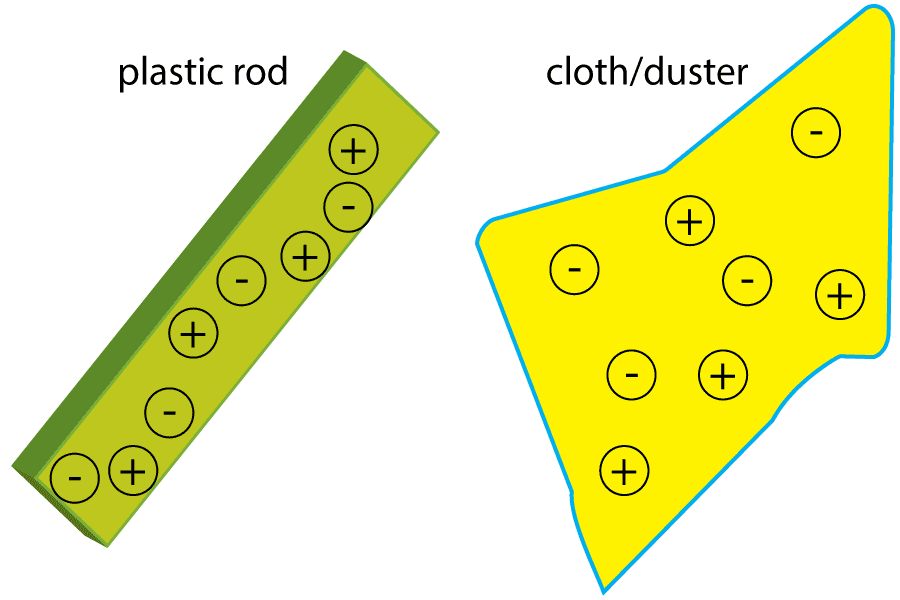 |
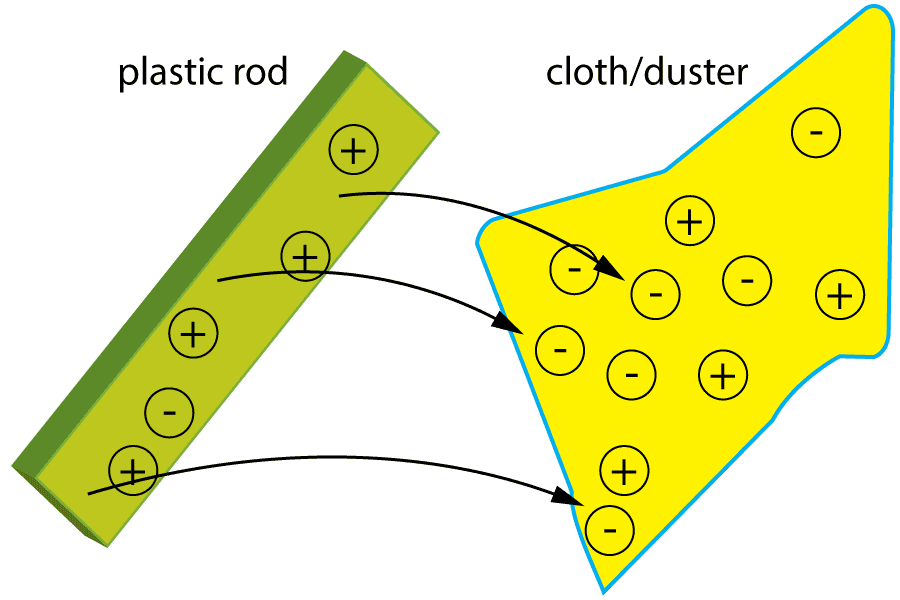 |
| Before the experiment | After rubbing with the cloth |
Figure 1 - Charging a rod with a cloth
This diagram simplifies the picture by only showing a few of the charges present - four of each type instead of billions! As can be seen in the first image, the cloth and rod have equal positive and negative charges, so both of them are neutral. (No net charge present).
However friction dislodges some of the charges. In this example, the negative electrons move from the rod to the cloth. This makes the rod have an overall positive charge and the cloth has a negative charge.
Some substances hold on to their electrons tighter than others, and so the direction of travel of the electrons depends on the substance used. In figure 2, a different plastic is used, resulting in the electrons moving in the opposite direction:
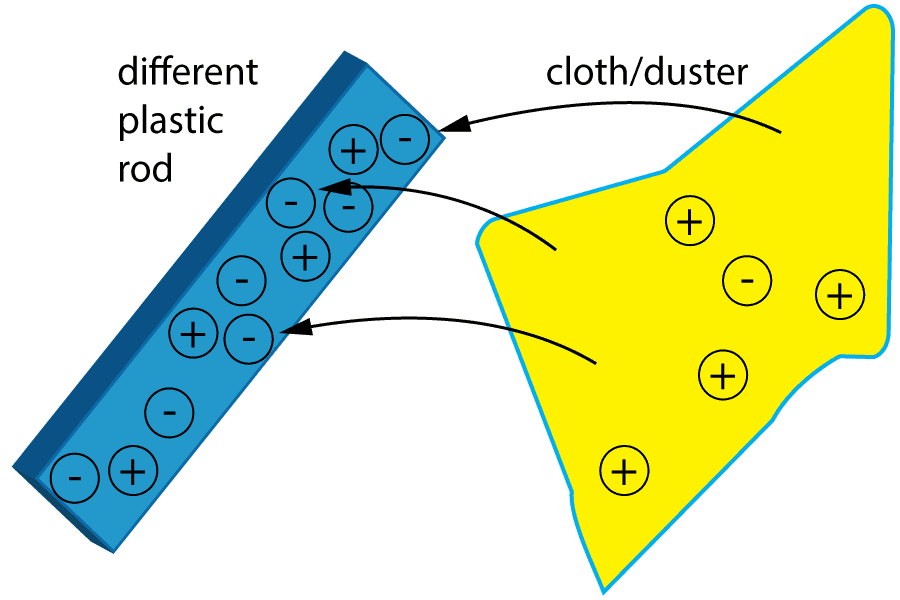
Figure 2 - Producing a negative static charge on the rod
In this example, the negative electrons now move from cloth to rod, leaving the rod negative and the cloth positive.
Note that it is ONLY negative electrons that move - the positive charges (protons in the nucleus) are not able to move through friction.
You do not need to learn which plastics turn positive or negative, only how the process works.
Just like magnets, static charges produces forces of attraction and repulsion, and the rules are very similar:
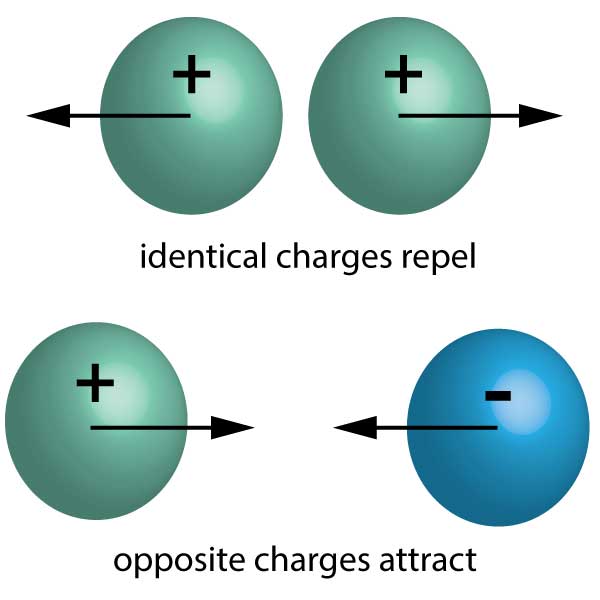
Figure 3 - Static repulsion and attraction
Both of the YouTube videos at the start of this section show uncharged objects being attracted to a charged one. This is the standard demonstration of static electricity, although why it happens is beyond the scope of the syllabus. However, if you are interested in how this works, read this extension section.
An uncharged piece of paper has billions of positive and negative charges, in equal numbers. In our simplified example, we will look at a few of them. The paper has a neutral charge overall. However, when a charged rod is held nearby, the charges separate. In this example, the negative charges are attracted upwards towards the positive rod, leaving a net positive charge in the lower half of the paper. The movement can be microscopic, but again it is exaggerated here.
The negative charges are now slightly closer to the rod, so this has a stronger upwards force than the repulsive downward force. The resultant force pulls the paper upwards.
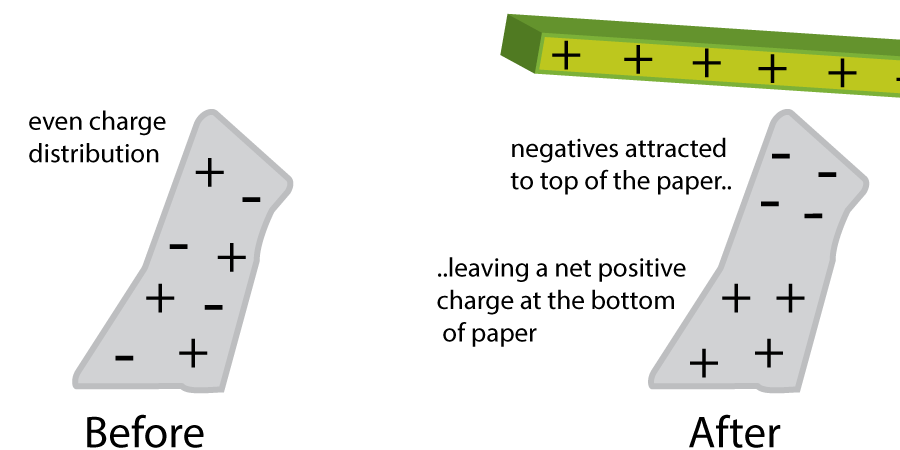
Here are some common examples of attraction and repulsion:
Questions:
1. Explain how a positive charge can be produced on a plastic rod.
Friction between the rod and a cloth / duster results in electrons being transferred, from the rod to the cloth. This leaves more positive charges than negative on the rod.
An electric field is simply a region where charges can produce a force. We show the force by drawing lines with arrows, called electric field lines. The lines show the direction a small positive charge would be pushed. For example, here are the field lines around some charged spheres:
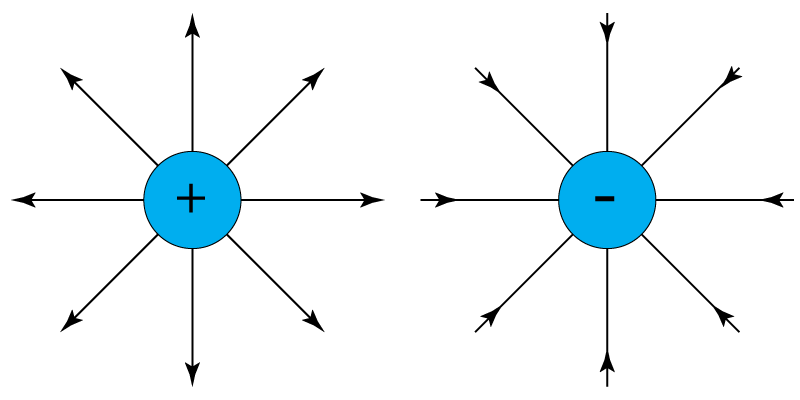
Figure 4 - Electric field lines around a positive and negative charged sphere
As you can see, the lines point away from the positive sphere to show that a small positive charge would be repelled. The lines point inwards to the negative charged sphere to show a small positive charge would be attracted towards the centre. You need to be able to draw these electric field diagrams.
Note that the lines are closer together near the surface of the sphere, indicating that the electric field is stronger. Therefore there will be a stronger force acting on other charges near the sphere's surface.
Any other charges brought within the electric field will experience a force of either attraction or repulsion. In general, the closer two charges are, the stronger the force between them as the electric field is stronger.
A thunder cloud has an enormous charge, and hence an enormous electric field. This strong field acts on all charges within the field of the cloud, even on the ground under the cloud. Although air is an insulator, the electric field can become so strong that this insulation breaks down, and charges start to flow between the ground and the cloud. A massive flow of charge results - what we see as a lightning bolt.
This happens on a small scale when we see sparks generated by static electricity - a very strong electric field causes charges to flow across the air gap between charged objects.
The video below shows that sparks produced by static electricity near fuel can be extremely dangerous!
YouTube 3 - The dangers of static electricity (Brainiac Store)
Have a go at these quick, 10 minute questions on static electricity: